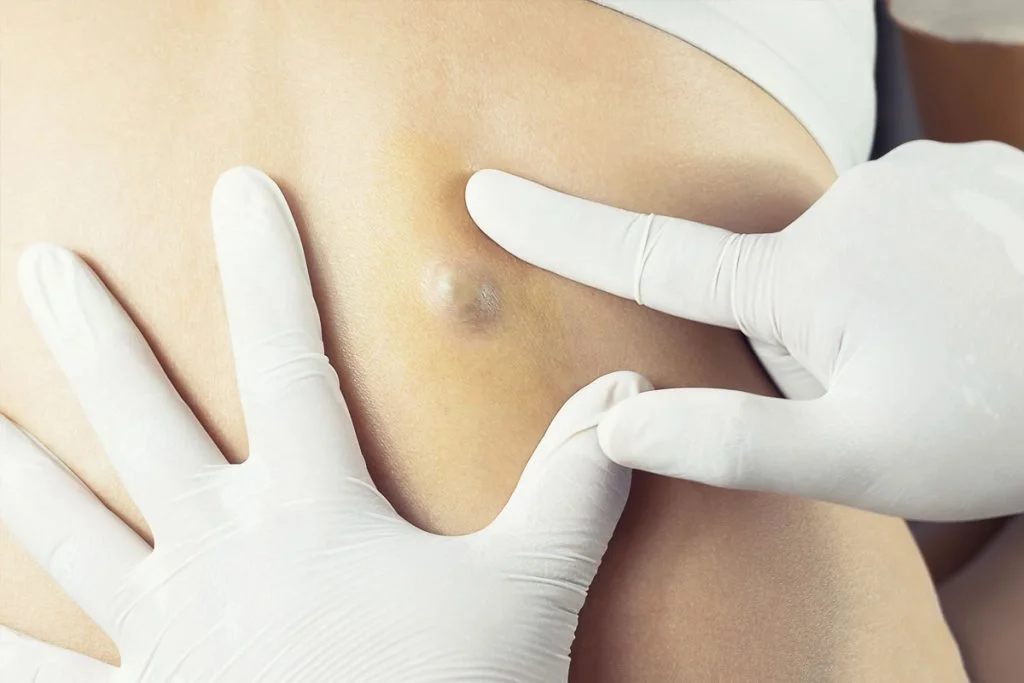
Cysts are common benign growths that can develop in various parts of the body. They are essentially closed sacs filled with fluid, semi-solid material, or air, often lined by a thin epithelial layer. While many cysts are harmless and asymptomatic, they can cause discomfort, pain, or complications if they grow large, become infected, or rupture. Surgical removal, known as cystectomy, is a standard treatment option when conservative measures fail or when there’s a risk of malignancy. This procedure aims to excise the cyst entirely to prevent recurrence and alleviate symptoms. In this article, we’ll explore the types of cysts, indications for surgery, preparation, techniques, recovery, risks, and alternatives, providing a detailed look at this surgical intervention.
Cysts can form anywhere in the body, from the skin to internal organs, due to factors like blocked ducts, trauma, infection, or genetic predispositions. The most common types include:
Sebaceous Cysts (Epidermoid Cysts): These arise from blocked sebaceous glands in the skin, often on the face, neck, or trunk. They contain keratin and sebum, appearing as firm, movable lumps under the skin.
Ovarian Cysts: Functional cysts related to the menstrual cycle are common in women of reproductive age. Dermoid cysts or cystadenomas may require surgery if they persist beyond a few cycles.
Ganglion Cysts: Fluid-filled sacs near joints or tendons, typically in the wrist or hand, caused by joint capsule herniation.
Breast Cysts: Simple fluid-filled sacs in breast tissue, often linked to hormonal changes.
Kidney or Pancreatic Cysts: These are usually benign but can be problematic if they obstruct organs or grow large.
Pilonidal Cysts: Located near the tailbone, these can become infected and form abscesses.
The decision for surgical removal depends on the cyst’s location, size, and symptoms. Small, asymptomatic cysts might be monitored, but intervention is warranted if they exceed 5 cm, cause pressure on surrounding tissues, or show signs of infection (redness, swelling, pus).
Surgery is not always the first line of treatment. Watchful waiting or aspiration (draining fluid with a needle) may suffice for simple cysts. However, surgical excision is indicated in several scenarios:
Symptomatic Cysts: Pain, swelling, or functional impairment, such as a ganglion cyst limiting hand movement.
Recurrent or Infected Cysts: Repeated infections or abscess formation, common in pilonidal cysts, necessitate removal to eliminate the source.
Diagnostic Uncertainty: If imaging suggests a complex cyst (e.g., with solid components), surgery
Diagnostic Uncertainty: If imaging suggests a complex cyst (e.g., with solid components), surgery provides both diagnosis and treatment. For ovarian cysts, a CA-125 blood test or ultrasound may raise concerns about ovarian cancer, prompting laparoscopy.
Cosmetic or Functional Concerns: Visible cysts on the face or those interfering with daily activities, like a Bartholin’s cyst in the vaginal area causing discomfort during intercourse.
Risk of Complications: Rupture can lead to peritonitis (abdominal inflammation) or chemical irritation from cyst contents. Infected cysts may spread bacteria systemically.
Early intervention prevents these issues, and guidelines from organizations like the American College of Surgeons emphasize surgery for persistent or problematic cysts.
Preparation for cyst removal varies by location and type but generally involves a multidisciplinary approach. A thorough medical history and physical exam are essential to assess the cyst’s characteristics and rule out contraindications like active infection or bleeding disorders.
Diagnostic Tests: Ultrasound, CT, or MRI confirms the cyst’s size, location, and contents. For internal cysts, blood tests (e.g., complete blood count, coagulation profile) and sometimes biopsies are performed. In ovarian cases, hormonal assays may be needed.
Patient Optimization: Patients are advised to stop smoking and certain medications (e.g., blood thinners like aspirin) 1-2 weeks prior to reduce bleeding risks. Fasting is required for procedures under general anesthesia. For outpatient surgeries like sebaceous cyst excision, local anesthesia suffices, minimizing preparation.
Informed Consent: Surgeons discuss potential outcomes, including scarring, recurrence rates (typically 5-10% if not fully excised), and alternatives. Psychological support may be offered for anxiety-provoking procedures, such as those in sensitive areas.
Outpatient settings handle most minor cystectomies, while complex ones (e.g., pancreatic) require hospitalization.
Cyst removal techniques are tailored to the cyst’s anatomy to ensure complete excision and minimize damage to surrounding tissues. The goal is to remove the cyst wall intact, as leaving fragments can lead to regrowth.
Excisional Biopsy: The standard for superficial cysts. Under local anesthesia, an incision is made over the cyst, the contents are evacuated, and the sac is dissected out with scissors or electrocautery. For sebaceous cysts, a punch biopsy tool may create a small entry point. The wound is closed with sutures, often in layers for deeper cysts.
Laparoscopic Cystectomy: Preferred for abdominal or pelvic cysts like ovarian ones. Small incisions allow insertion of a camera and instruments. The cyst is decompressed, removed in a bag to prevent spillage, and extracted. This minimally invasive method reduces recovery time compared to open surgery.
Marsupialization: Used for recurring cysts like Bartholin’s. The cyst is incised, and its walls are sutured to the skin to form a pouch, allowing drainage without full removal. This is less invasive but has a higher recurrence rate.
Endoscopic or Robotic-Assisted Removal: For cysts in hard-to-reach areas, such as kidney or spinal cysts. Robotics enhance precision, especially in delicate neurosurgical cases.
Laser or Cryotherapy: Emerging for small skin cysts, where lasers vaporize the cyst or freezing destroys it. These are outpatient procedures with minimal scarring but not suitable for all types.
Surgical time ranges from 15 minutes for simple excisions to several hours for complex internal ones. Antibiotics are given prophylactically for infected cases, and drains may be placed to manage fluid buildup.
Surgical removal of cysts remains a cornerstone of treatment, balancing efficacy with minimal invasiveness. Advances in laparoscopy and robotics have made procedures safer and more accessible, reducing hospital stays and complications. However, success hinges on accurate diagnosis, skilled execution, and patient compliance. If you’re experiencing cyst-related symptoms, consult a healthcare provider for personalized advice—early intervention can prevent escalation. With proper care, most patients enjoy full recovery and improved quality of life.
Chat With Me